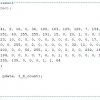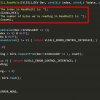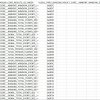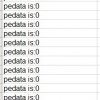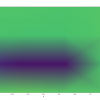Throughout the past week, I was able to write my first code that merely uses I2C calls to initialized and read of the VL53L1X sensor. The code mimics the exact send/receive byte sequences which were captured by the ST’s library in the past week. Currently, I’m capturing the same sequences of dat...
Throughout this past week, I was able to use all the knowledge collected from the previous weeks which I have discussed in my previous blogs and generate a table that lists all the I2C communication which happens sequentially between the microcontroller and the Vl53L1X sensor. I added Serial.print f...
In the process of finding the registers that are associated with the individual values of the SPADs, first I created a table which lists all the indexes associated with the internal registers of the VL53L1X. A total number of 4096 indexes were captured and classified with the similar classification...
Throughout the past two weeks, I was able to figure out the I2c function calls from the ST’s Arduino API and extract and use them directly on the Arduino IDE. First, I used the Doxigen documentation tool with Graphviz dot to generate block diagrams of all functions, classes and structs and their con...
This week I was able to process and visualize the data received from the Arduino using a Python script. The code mainly uses the matplotlib and numpy libraries’ functions in order to manipulate and plot the data in different formats. The data were captured by the VL35L1X sensor on an Arduino Uno for...
- «
- »
